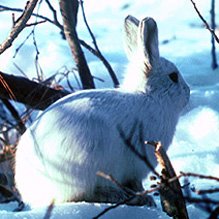
In this activity, learn how camouflage helps an animal to survive in the wild.
What You Need
- Area that has a brown background (e.g., brown house, tree trunk)
- Brown pants (to fit adult)
- Area that has a white background (e.g., white house, white van)
- White top (to fit adult)
What You Do
- Stand Next to White Background
Dress in the top and pants. Then stand next to the white background.
Have your child walk to a designated place in the distance. Then ask: “Which piece of my clothing is easier to see, the top or the pants? Why?” (The brown pants are easier to see. The white top blends in with the surroundings.) - Stand Next to Brown Background
Now stand next to the brown background. Have your child walk a similar distance away from you, and ask the question again: “Which piece of my clothing is easier to see, the top or the pants? Why?” (The white top is easier to see this time because now the brown pants blend in with the surroundings.) - Talk About Camouflage
Tell your child that a hare has a white coat during cold, snowy weather and a brown coat during warm weather. Ask:- How does being white in cold, snowy weather help the hare to stay safe? (It is hard for enemies to spot the hare because it blends in with the surrounding snow.)
- How does being brown in warm weather help the hare to stay safe? (It is hard for enemies to spot the hare because it blends in with the brown ground and tree trunks that now make up the surroundings.)
For older children:
Here are two other points you may wish to cover:-
- Coloring that helps animals and plants to blend in with their surroundings is called camouflage.
- Not all white animals change color during warm weather. The snowy owl, for example, stays white year round.

